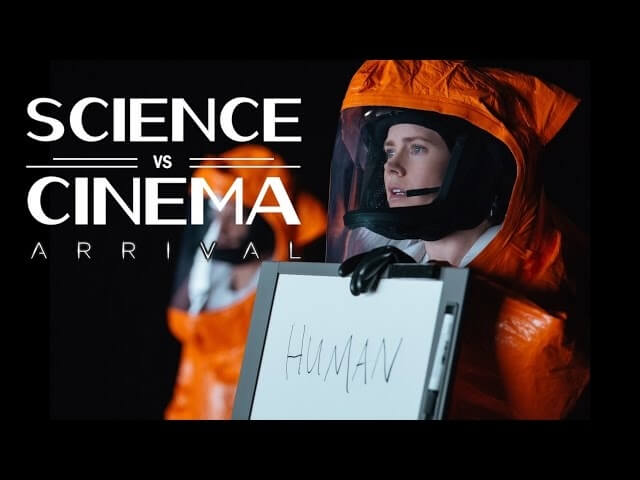
The average moviegoer will probably not give too much thought to the plausibility or accuracy of a science-fiction film. Then again, the average moviegoer probably isn’t a professional astrophysicist like Andy Howell, host of the web series Science Vs. Cinema. To Howell, it matters whether Hollywood gets the science right—or as close to right as the plot will allow. In its latest episode, Science Vs. Cinema examines Denis Villeneuve’s critically acclaimed Arrival to determine just how well the new film portrays physicists, linguists, and possible alien life.
The answer turns out to be: pretty darned well. It seems that the filmmakers behind Arrival did what they could to ground their movie in reality. Not every movie bothers to do this, Howell explains, and a cringe-inducing clip from Independence Day is shown as example of what not to do.
Arrival involves human beings coming into contact with and attempting to communicate with members of an alien species. For the director and his crew, this posed a number of challenges, including creating a viable extraterrestrial race, complete with its own language and technology. Villeneuve wanted to avoid the Star Trek cliché of using humanoid, bipedal aliens with very recognizable faces. Instead, the film’s “heptapod” aliens are more like deep sea life. Their written language, meanwhile, looks like a series of coffee cup stains, each with its own distinct meaning. Even their ship, compared here to a rotting banana, seems to come from a decidedly non-human mindset. The aliens perceive space and time in a very different way than human beings, and, Howell says, that is scientifically reflected throughout the film. If Arrival feels a lot smarter than other sci-fi flicks on the market, that’s because it is.